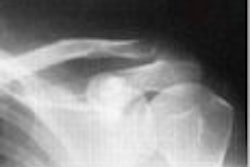Despite recent technological advances, mammography remains an inexact science. Current x-ray-based systems miss too many cancers, and too many patients are sent on for biopsy of suspicious masses that prove to be benign. Even the most ardent breast imaging advocates say improvements are needed.
Fortunately, medical imaging is a wellspring of innovation. Several companies are working on new technologies that could become useful adjuncts to mammography, increasing detection rates and boosting precision by ruling out masses that don’t need to be biopsied.
Contributing editor Deborah R. Dakins discusses a few of these technologies in a report filed from this week’s National Consortium of Breast Centers conference in Las Vegas. You’ll find the report in our Women’s Imaging Digital Community.
The new techniques represent cutting-edge research in areas such as infrared imaging, electrical impedance scanning, and optical imaging. While each method is unique, they share common approaches: detecting energy consumption of abnormal breast tissue or malignancy-induced vascular changes such as angiogenesis.
Yet the path from laboratory to clinic has been uneven. Some technologies have gotten mired in the FDA’s regulatory approval process, while others were approved but failed to catch on.
Learn about these new technologies and the challenges ahead at womens.auntminnie.com. And be sure to check back throughout the week for more reports from the NCBC meeting, also in the Women’s Imaging Digital Community.



















